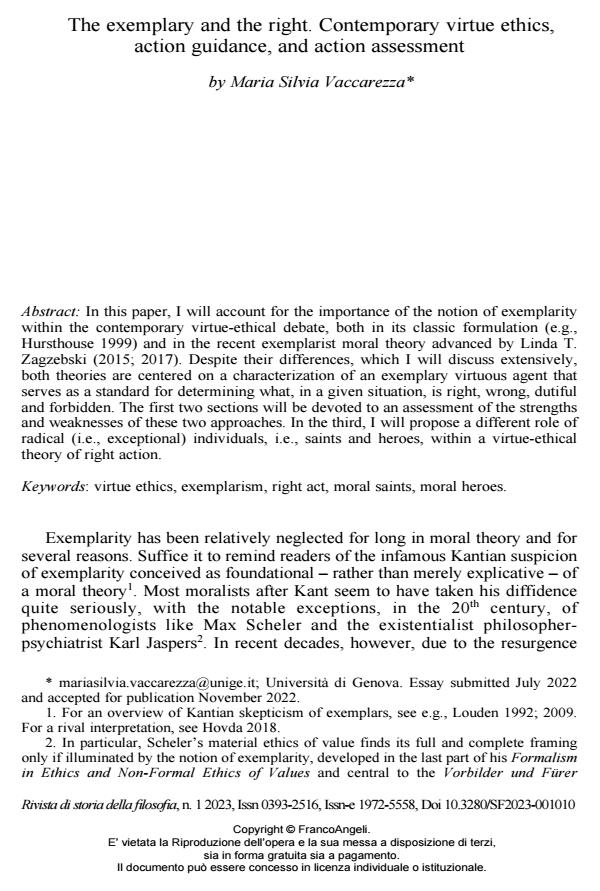The exemplary and the right. Contemporary virtue ethics, action guidance, and action assessment
Titolo Rivista RIVISTA DI STORIA DELLA FILOSOFIA
Autori/Curatori Maria Silvia Vaccarezza
Anno di pubblicazione 2023 Fascicolo 2023/1
Lingua Inglese Numero pagine 17 P. 148-164 Dimensione file 208 KB
DOI 10.3280/SF2023-001010
Il DOI è il codice a barre della proprietà intellettuale: per saperne di più
clicca qui
Qui sotto puoi vedere in anteprima la prima pagina di questo articolo.
Se questo articolo ti interessa, lo puoi acquistare (e scaricare in formato pdf) seguendo le facili indicazioni per acquistare il download credit. Acquista Download Credits per scaricare questo Articolo in formato PDF

FrancoAngeli è membro della Publishers International Linking Association, Inc (PILA)associazione indipendente e non profit per facilitare (attraverso i servizi tecnologici implementati da CrossRef.org) l’accesso degli studiosi ai contenuti digitali nelle pubblicazioni professionali e scientifiche
In this paper, I will account for the importance of the notion of exemplarity within the contemporary virtue-ethical debate, both in its classic formulation (e.g., Hursthouse 1999) and in the recent exemplarist moral theory advanced by Linda T. Zagzebski (2015;; 2017). Despite their differences, which I will discuss extensively, both theories are centered on a characterization of an exemplary virtuous agent that serves as a standard for determining what, in a given situation, is right, wrong, dutiful and forbidden. The first two sections will be devoted to an assessment of the strengths and weaknesses of these two approaches. In the third, I will propose a different role of radical (i.e., exceptional) individuals, i.e., saints and heroes, within a virtue-ethical theory of right action.
Parole chiave:virtue ethics, exemplarism, right act, moral saints, moral heroes
- Exemplary Arguers (for Example, in Law) Amalia Amaya, in Topoi /2025 pp.813
DOI: 10.1007/s11245-024-10160-6 - The Company We Choose to Keep Nicholas Poole, in Arendt Studies /2025 pp.253
DOI: 10.5840/arendtstudies2025968 - Epistemic Role Models Michel Croce, Duncan Pritchard, in The Journal of Value Inquiry /2025
DOI: 10.1007/s10790-025-10066-5
Maria Silvia Vaccarezza, The exemplary and the right. Contemporary virtue ethics, action guidance, and action assessment in "RIVISTA DI STORIA DELLA FILOSOFIA" 1/2023, pp 148-164, DOI: 10.3280/SF2023-001010